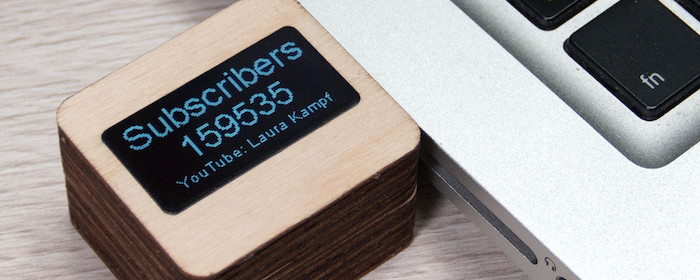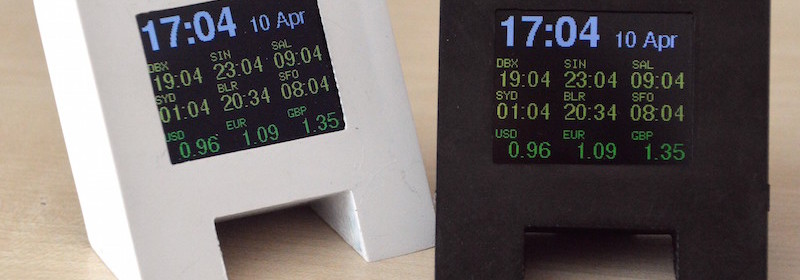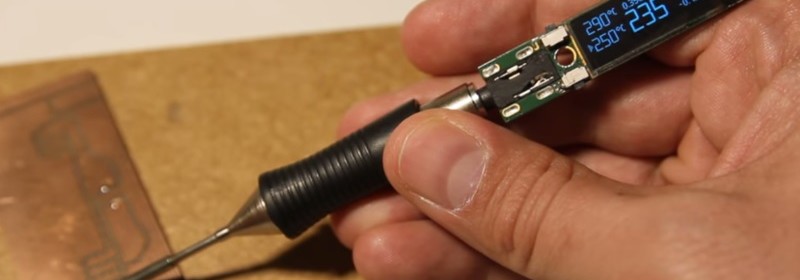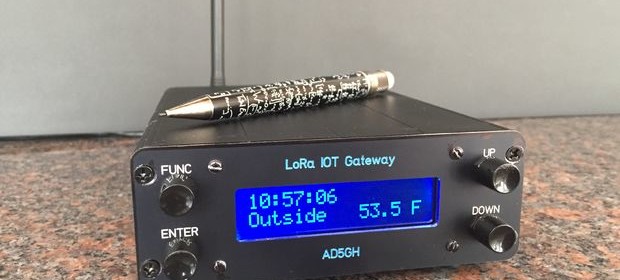YouTube subscriber counter

Another illustration of making an YouTube subscriber counter using ESP8266 and SH1106-driven OLED. The firmware is based on YoutubeApi.h and SH1106 library.

Another illustration of making an YouTube subscriber counter using ESP8266 and SH1106-driven OLED. The firmware is based on YoutubeApi.h and SH1106 library.

ForEx is a cute little desktop widget designed by Stefan for displaying major foreign exchange rates and the time of different locations using ESP8266.
The time zone references are fetched a bit complicated but this method works and deliver accurate results. Further it allows using the effective name of the city which makes easier to use. In a first step the coordinates of the desired city are evaluated using the API of openweathermap.org. This works by sending the name of the city in a format like “Sydney,au” to the API which will response with its coordinates. In the second step the momentary offset to UTC of this coordinates is calculated. This can be done by sending those coordinates to the worldweatheronline.com API.
With this UTC offset information the time at the current location and the time on the defined cities is calculated and displayed. The advantage of this slightly complicated method is the always respected day light saving state at any place including the actual location.
For the evaluation of the currency exchange rate the fixer.io API is used. There are forex API’s offering much more currencies with a shorter update cycle. But this API is simple to use, doesn’t require an API Key and can easily provide the exchange rate to a chosen reference currency.

This cloud-connected energy meter works in conjunction with the regular household power meter to provide detailed information about the electricity usage at home.
Modern power meters have a LED blinking every time a watt-hour is used, the IEM detects these flashes using a interrupt, counts them, then the data is stored to the cloud. Usually power companies provide very rough electricity usage data, the IEM provides data with a minute resolution. Knowing the household electricity usage allows to extrapolate statistics and can give precise numbers about the costs.

This STM32F031-based OLED display for soldering iron tips is a very compact design and displays various stats like tip temperature, power consumption, supply voltage, etc.
I found some projects where is used Weller soldering tips designed for WMRP soldering iron with standard 3.5mm jack and inside the tip is also thermocouple for sensing temperature. These tips are not so cheap but the quality is really great, especially for fine soldering.
Hardware design is based on similar projects but with some modifications and improvements. Also my request was to make the hardware small as possible to fit into handle and capable to supply from hobbyist LiPO battery.

Rod Gatehouse‘s LoRa IOT Home Environment Monitoring System is built using readily available hardware modules and consists of multiple remote stations with environmental sensors that communicate to an Arduino Mega based IoT gateway via LoRa RF modules.
The LoRa IOT Home Environmental Monitoring System consists of an Arduino Mega based IOT-to-Internet gateway and Arduino Feather based remote stations with environmental sensors. The remote stations communicate wirelessly with the gateway using LoRa radios.
The system enables a homeowner to monitor the home environment via an internet accessible dashboard, receive periodic SMS environmental notifications, receive realtime SMS alerts when monitored environmental parameters exceed preset thresholds, and log environmental data to the cloud.